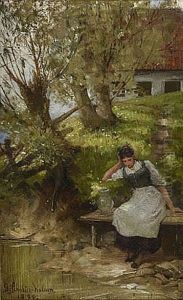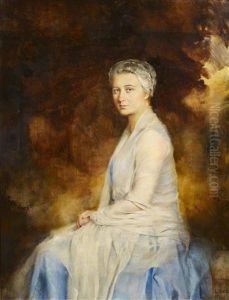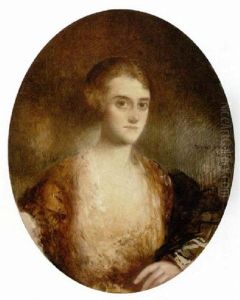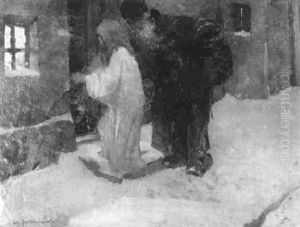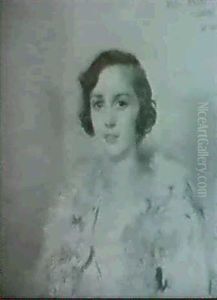Georg Schuster-Woldan Paintings
Georg Schuster-Woldan was a notable German painter and graphic artist whose work spans the late 19th and early 20th centuries. Born on April 27, 1873, in Landeshut, Silesia (now Kamienna Góra, Poland), Schuster-Woldan grew up in an era marked by rapid industrialization and the flourishing of the arts in Germany. He embarked on his artistic journey at a young age, demonstrating a keen interest and natural talent in drawing and painting.
Schuster-Woldan received his formal art education at the prestigious Academy of Fine Arts in Munich, where he was influenced by the Symbolist movement and the Jugendstil, the German variant of Art Nouveau. His early works were characterized by a fascination with mythological and biblical themes, often imbued with a dreamlike, ethereal quality that reflected the Symbolist interest in the mystical and the subconscious.
Throughout his career, Schuster-Woldan's style evolved, incorporating elements of Impressionism and Expressionism. He was known for his landscape paintings, portraits, and religious compositions, which were marked by a vibrant use of color and dynamic brushwork. His landscapes, in particular, captured the beauty and tranquility of the Bavarian countryside, where he spent much of his life.
In addition to his painting, Schuster-Woldan was an accomplished graphic artist, contributing illustrations to various literary and cultural publications of the time. His work in this medium demonstrated a keen sense of design and an ability to convey complex narratives through visual imagery.
Schuster-Woldan's contributions to the arts were recognized in his time, and he was a member of several art societies, including the Munich Secession, a prominent group of artists who sought to break away from the traditional academic standards of the time. Despite the changing artistic trends of the 20th century, Schuster-Woldan remained true to his unique vision, creating works that bridged the gap between the decorative elegance of Art Nouveau and the emotional intensity of Expressionism.
Georg Schuster-Woldan passed away on March 4, 1953, in Munich, Germany. His legacy is preserved in the collections of various German museums and galleries, where his works continue to be appreciated for their artistic merit and historical significance. Schuster-Woldan's career reflects a transitional period in European art, from the ornamental to the more introspective and expressive modes of representation, making him a key figure in the development of modern German art.

